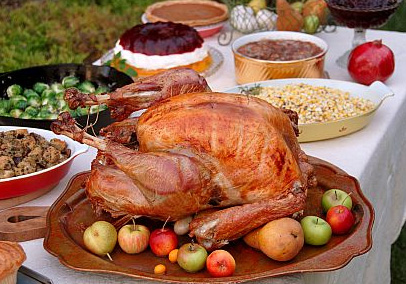
A juicy, delicious turkey might be the centerpiece of a Thanksgiving meal, but it could make you sick if it is not prepared safely.
Proper handling, cleaning and cooking can make a healthier, safer meal, and the Partnership for Food Safety Education offers seasonal food safety tips. Planning ahead is key, beginning with selecting a menu and deciding whether to buy a fresh or frozen turkey, said Julie Albrecht, UNL Extension food specialist.
"Ideally, purchase your frozen turkey as far in advance as necessary to safely thaw it in the refrigerator," she said.
Fresh and frozen turkeys are no different in quality, but a frozen turkey must be purchased far enough in advance to allow for proper thawing. Allow about 24 hours to defrost for every four to five pounds of turkey. Never thaw the turkey on the counter. Instead, put it in the refrigerator or in cold water to prevent the growth of microorganisms. If using water, change the water every 30 minutes. Cook the turkey immediately and do not refreeze it.
"The refrigerator method is safest and will result in the best finished product," Albrecht said.
The other menu items require planning as well. After determining the number of guests and any dietary restrictions they might have, it might be helpful to make a perishable foods shopping list and a separate non-perishable foods shopping list.
First purchase non-perishables, like canned vegetables and dry ingredients such as flour, sugar and salt, on an earlier shopping trip. Save perishables like meat, fresh vegetables, eggs and cheese for purchase until five or fewer days before Thanksgiving.
When it's time to cook, turkeys need to be heated to a safe internal temperature of 165 degrees, which should be confirmed with the use of a food thermometer. The approximate cooking times for an unstuffed turkey at 325 degrees are:
– 1.5 to 2.25 hours for four to six pounds
– 2.25 to 3.25 hours for six to eight pounds
– 2.75 to three hours for eight to 12 pounds
– 3 to 3.75 hours for 12 to 14 pounds
– 3.75 hours for 14 to 18 pounds
– 4.25 to 4.5 hours for 18 to 20 pounds
– 4.5 to 5 hours for 20 to 24 pounds
Vegetable preparation can be handled with four steps:
– Clean – Wash your hands, all kitchen surfaces and utensils, and the fruits and vegetables.
– Separate – Keep fruits and vegetables separate from raw meat and poultry as well as household chemicals.
– Cook – Cook or throw away food that has touched raw meat or poultry.
– Chill – Refrigerate cut, peeled or cooked fruits and vegetables within two hours.
"As health and nutrition experts continue to recommend we add more fruits and vegetables to a healthy daily diet, it becomes increasingly important that consumers know how to handle them properly," Albrecht said.
After the meal, there are usually lots of leftovers. Leftovers should be refrigerated within two hours and stored in smaller portions in shallow containers. Reheat leftovers to 165 degrees and check for cold spots with a food thermometer. For information on how long traditional Thanksgiving leftovers will keep, visit the PFSE's holiday food safety website or use the 4-Day Throw Away app for iPad and iPhone. The app is available at http://go.unl.edu/4-day.